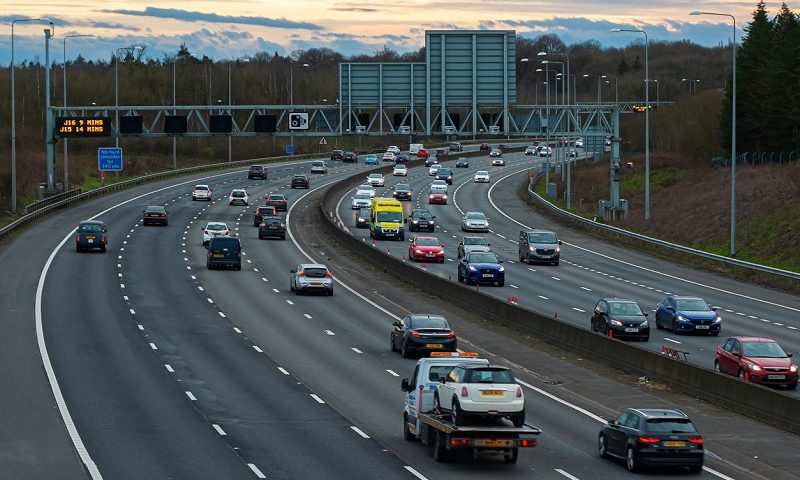Smart motorways to be made safer

How confident do you feel using so-called ‘smart’ motorways? It seems safety improvements are finally being made to stretches of smart motorway in England, road bosses have announced.
Smart motorway safety upgrade
You can expect to see more emergency laybys, more warning signs and further road markings, following a review by National Highways – formerly Highways England.
The agency responsible for England’s motorways and major A roads in England commissioned independent studies of a section of the M6 near Birmingham and three stretches of the M1 near Luton, Sheffield and Wakefield.
These have recorded 14 fatal crashes since conversion into smart motorways without a permanent hard shoulder.
In 2019, two men died after a lorry collided with their vehicles as they stood stationary in lane one of the M1 near Sheffield. In January of this year, a coroner found the lack of hard shoulder contributed to their deaths.
The National Highways review noted ‘a rise in collisions of serious severity’ between junctions 10 and 13 on the M1 and that ‘fatal injury collisions have increased from one in three years, to three in three years’ between junctions 32 and 25.
Within its upcoming plans, drivers will also benefit from an extra emergency refuge on the M1 and a ‘place to stop’ on the M6 near Birmingham.
Extra signage will also be displayed to inform drivers about where emergency laybys are, slip roads will be redesigned and a system for spotting broken-down vehicles will be brought in at a faster pace.
Campaigners have long called for action to improve the safety of smart motorways, including fighting against the temporary or permanent removal of hard shoulders, which they believe poses more risk to drivers.
However, in a Department for Transport (DfT) report published in 2020, Grant Shapps said that between 2015-2018 the fatal casualty rate for smart motorways without a permanent hard shoulder was lower than on those with.
A separate report has found that official safety figures may have “obscured the impact” of removing the hard shoulder. The Office of Rail and Road was also ordered to review the motorways’ safety record by Mr Shapps, which concluded no errors were found in the figures, though only a “limited amount” of data was available.
Effect of removing the hard shoulder
On stretches of smart motorway the hard shoulder is either permanently or temporarily converted into a live running lane, intended to control and improve traffic flow.
But if drivers have an accident or break down too far from a junction or S0S area, they could be left out of reach of help.
While their safety is dependent on the ‘red X’ being activated to close the lane, many drivers have previously ignored such guidance.
Find out what the cost of ignoring the red ‘X’ is with our informative report.


